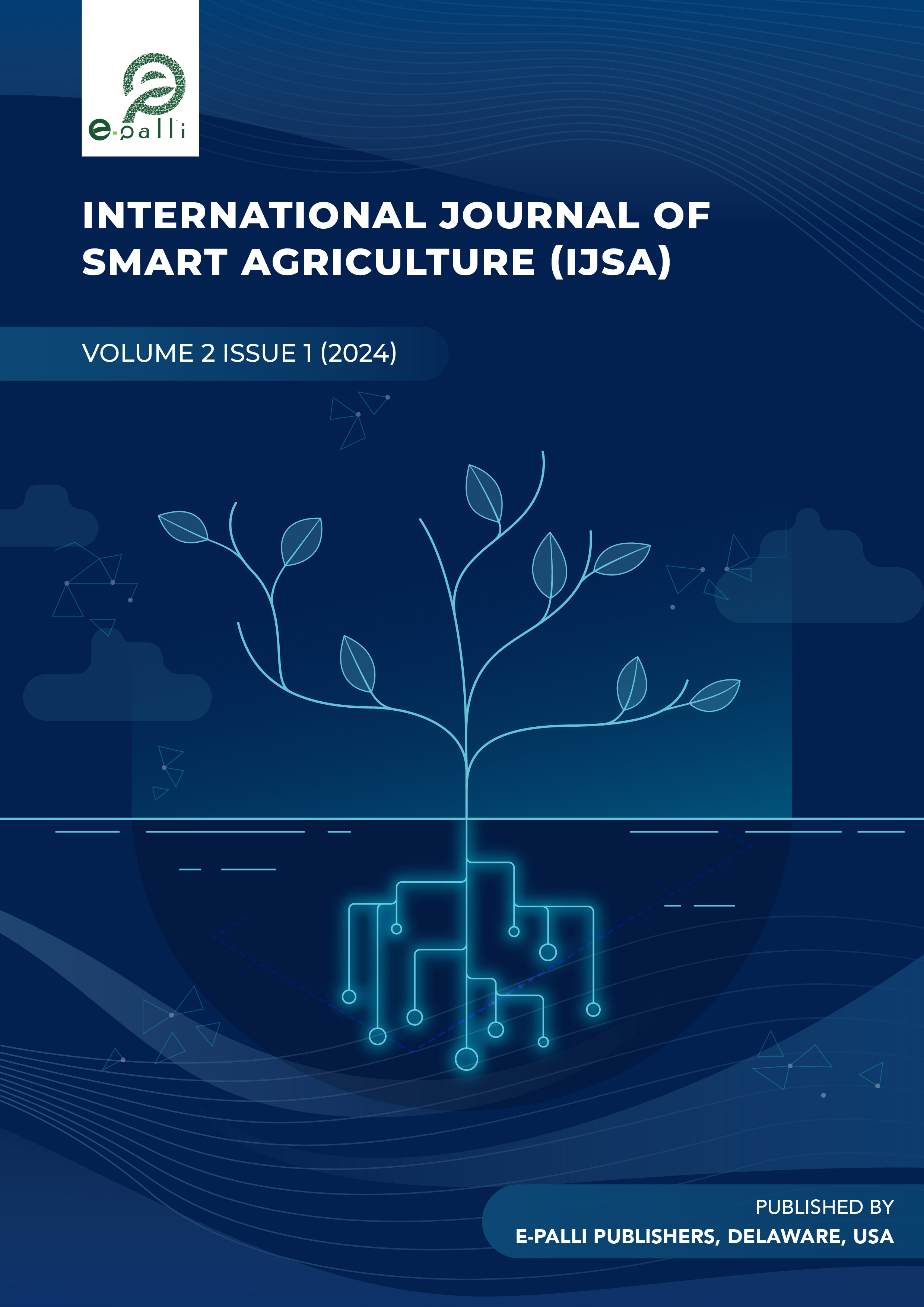Strategic Enhancements in Onion Cultivation Through Evaluating Plant Density and Harvest Intervals for Superior Yield and Profitability
DOI:
https://doi.org/10.54536/ijsa.v2i1.3322Keywords:
Benefit-Cost Ratio (BCR), Economic Benefits, Harvesting Time, Plant DnsityAbstract
The experiment was conducted at the agricultural research farm of the Department of Agronomy and Agricultural Extension, University of Rajshahi, Bangladesh from December 2020 to April 2021. The aim was to investigate the impact of plant density per hill and harvesting time on the growth, yield, and economic benefits of onions. Three plant densities were tested: one plant per hill (P1), two plants per hill (P2), and three plants per hill (P3). Additionally, two harvesting times were evaluated: 110 days after transplanting (H1) and 125 days after transplanting (H2). The experiment followed a Randomized Completely Block Design (RCBD) with three replications. Both plant density and harvesting time significantly influenced most growth and yield parameters. The highest values for leaf diameter, neck diameter, bulb length, bulb diameter, fresh bulb weight, dry bulb weight, and yields per hectare were observed with two plants per hill (P2). Similarly, the highest values for those parameters were found with the later harvest time of 125 days (H2). The combination of two plants per hill and harvesting at 125 days (P2H2) produced the best results, including the highest leaf and neck diameters, bulb dimensions, fresh and dry bulb weights, and yields per hectare. This combination also achieved the highest Benefit-Cost Ratio (BCR) of 2.12, compared to 1.71 for the one plant per hill and 110-day harvest combination (P1H1). Therefore, the study concludes that planting two onions per hill and harvesting at 125 days after transplanting yield the best growth, yield, and economic benefits.
References
BBS. (2019). Statistical Year Book of Bangladesh. 31th editions. Statistics and Informatics Division, Ministry of planning, Government of the People’s Republic of Bangladesh. p. 139-140.
Chaudhry, U. K., Junaid, M. D., Gökçe, Z. N. Ö., Gökçe, A. F. (2023). Impact of Biotic and Abiotic Stresses on Onion Production: Potential Mitigation Approaches in Modern Era. In: Singh, S., Sharma, D., Sharma, S. K., Singh, R. (eds), Smart Plant Breeding for Vegetable Crops in Post-genomics Era. Springer, Singapore. https://doi.org/10.1007/978-981-19-5367-5_7
Elouattassi, Y., Ferioun, M., El Ghachtouli, N., Derraz, K., & Rachidi, F. (2024). Enhancing onion growth and yield through agroecological practices: Organic fertilization and intercropping. Ecological Frontiers, 44(3), 547-557. https://doi.org/10.1016/j.chnaes.2023.09.004
El-Waseef, S. M., Abdel-Mageed, H., & Ramadan, Y. Y. (2023). Development a Unit for Onion Harvesting. Journal of Soil Sciences and Agricultural Engineering, 14(1), 17-26. https://doi.org/10.21608/jssae.2023.180174.1121
Gomez, K. A., & Gomez, A. A. (1984). Statistical Procedures for Agricultural Research. 2nd Edition, John Wiley and Sons, New York, 680 p. - References
Scientific Research Publishing. (n.d.). https://www.scirp.org/reference/ReferencesPapers?ReferenceID=2253909
Dollen, A. T., Magallanes, J. N., Alcarde, M. L., Gonzaga, A. B., & Gonzaga, N. R. (2021). Yield and postharvest performance of green onion (Allium fistulosum L.) as influenced by planting distance and fertilizer application. Acta Hortic, 1312, 277-284. https://doi.org/10.17660/ActaHortic.2021.1312.40
Ko, E. Y., Sharma, K., & Nile, S. H. (2016). Effect of harvesting practices, lifting time, curing methods, and irrigation on quercetin content in onion (Allium cepa L.) cultivars. Emirates Journal of Food & Agriculture (EJFA), 28(9). https://doi.org/10.9755/ejfa.2016-02-133
Kumar, P., Karam, N., & Choudhury, D. (2023). Assessment of the Phytochemical Constituents and Metabolites in the Medicinal Plants and Herbal Medicine Used in the Treatment and Management of Skin Diseases. In Herbal Medicine Phytochemistry: Applications and Trends (pp. 1-41). Cham: Springer International Publishing. https://doi.org/10.1007/978-3-031-21973-3_21-1
Kupaeva, N. V., Bogdanova, Y. I., Motovilina, A. A., Utyanov, D. A., Knyazeva, A. S., Spirina, M. E., Pchelkina, V. A., & Kotenkova, E. A. (2024). Study of the effect of onion husk ethanol extract on the chemical composition and microstructure of meat pates. Theory and Practice of Meat Processing, 9(1), 75–87. https://doi.org/10.21323/2414-438x-2024-9-1-75-87
Omari, S., Majidi, A. H., & Amiri, A. F. (2023). Effect of Nitrogen and Plant Spacing on the growth and yield of Onion (Allium Cepa L.) in Afghanistan. Plant Physiol Soil Chem, 3(2), 75-82. http://doi.org/10.26480/ppsc.02.2023.99.106
Prasad, B., Maji, S., & Meena, K. R. (2017). Effect of date of transplanting and mulching on growth, yield and quality of onion (Allium cepa L.) cv. Nasik Red. Journal of Applied and Natural Science, 9(1), 94-101. https://doi.org/10.31018/jans.v9i1.1156
Downloads
Published
How to Cite
Issue
Section
License
Copyright (c) 2024 Mesbaus Salahin, Tanvir Md. Rashedur Rahman, Md. Billal Hossain Momen, Sakhawat Hossain, Md. Mominul Islam, Md. Tariful Alam Khan

This work is licensed under a Creative Commons Attribution 4.0 International License.





